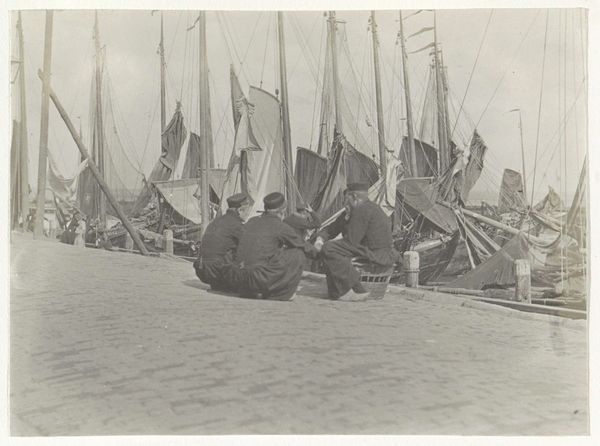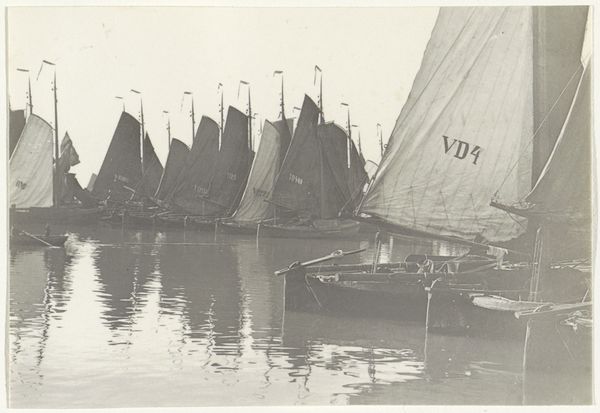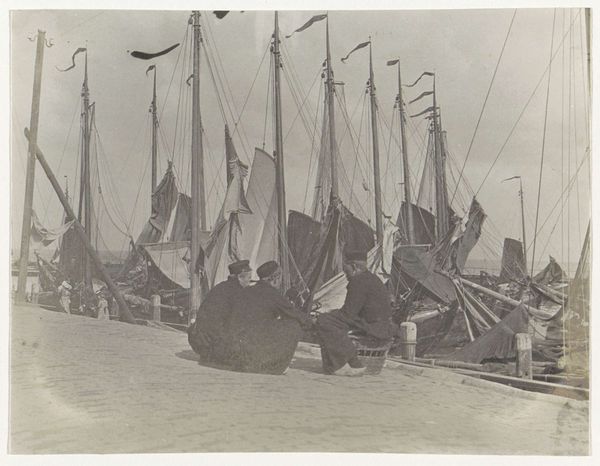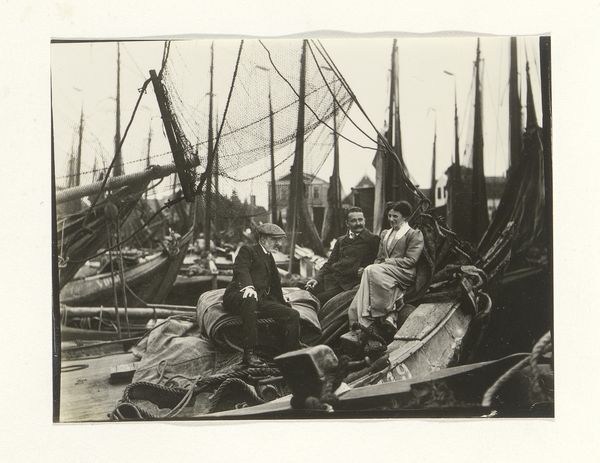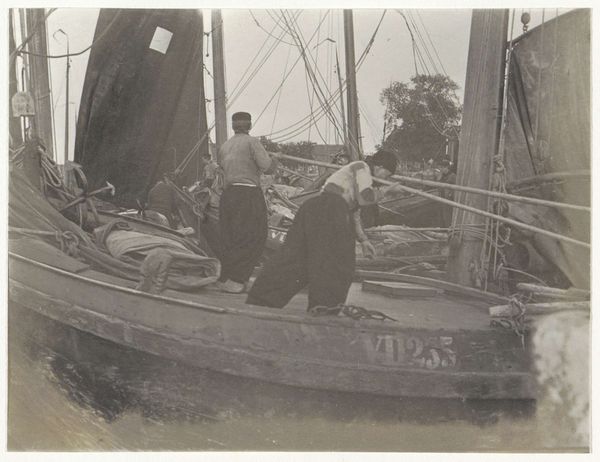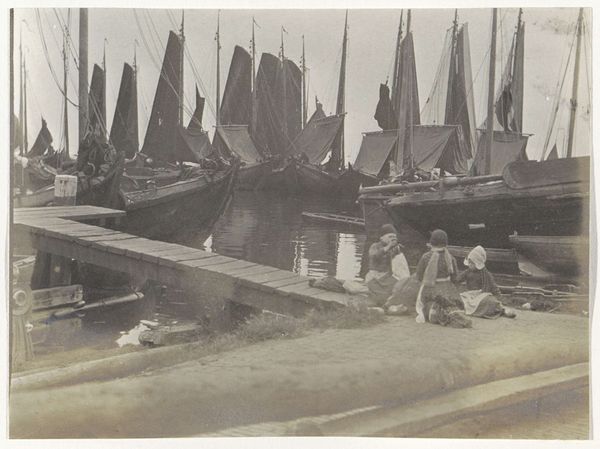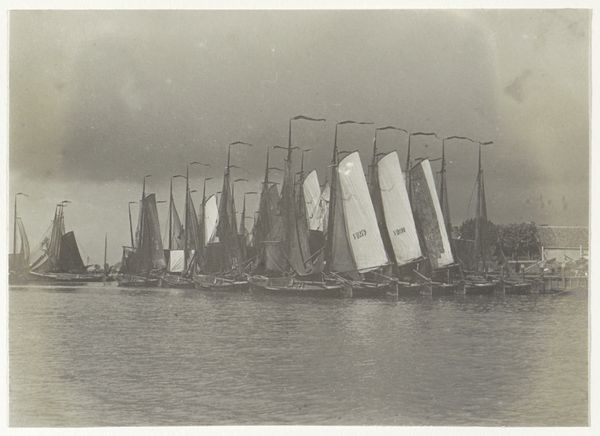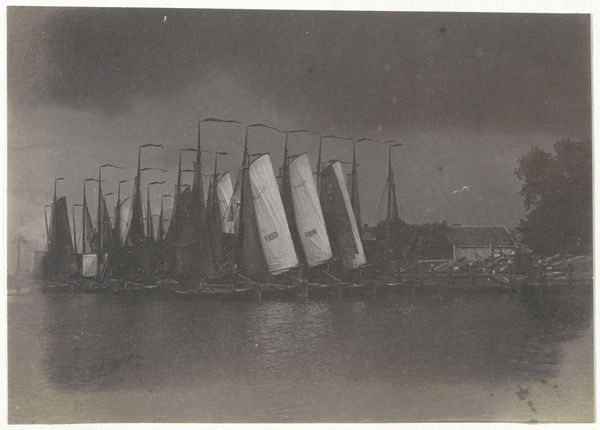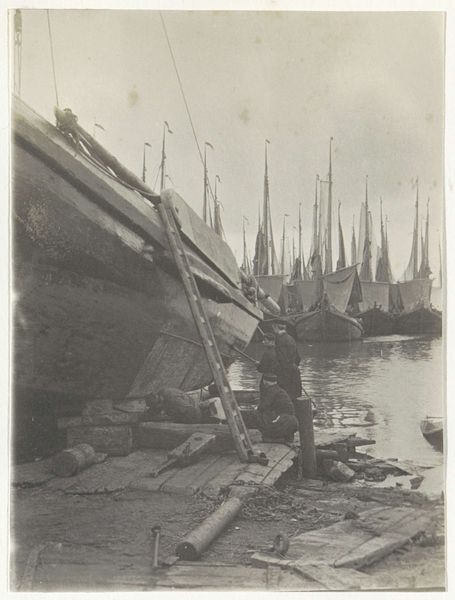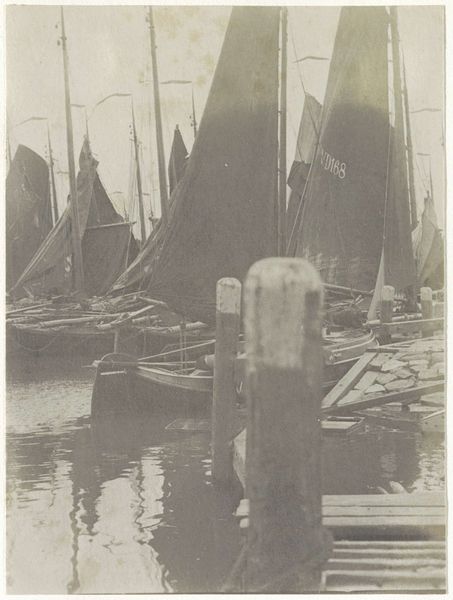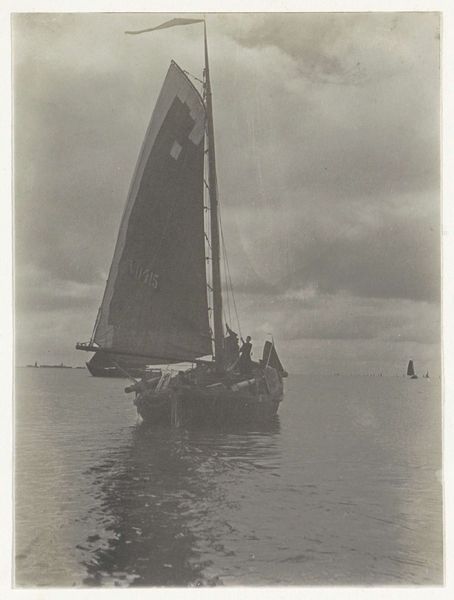
photography
#
portrait
#
dutch-golden-age
#
landscape
#
photography
#
realism
Dimensions: height 72 mm, width 99 mm
Copyright: Rijks Museum: Open Domain
Curator: This photograph, dating from around 1900 to 1910, presents "Mannen in Volendamse klederdracht zittend op een kade," showing men in Volendam traditional dress sitting on a quay. Editor: My initial impression is one of quiet stoicism. The subdued tones create a somber mood; the men, though together, seem isolated in thought. There's also an overwhelming sense of timelessness. Curator: Indeed, there's a gravity evoked by the composition. Photography was still establishing itself, so it wasn’t unusual for the compositions to mirror painterly traditions of the time. The visual weight on the left seems very intentional. Do you see a psychological tension with the clustering on the right? Editor: Absolutely. The stark contrast emphasizes the lone figure's solitude against the backdrop of interconnected vessels, almost symbolizing a community facing challenges. It highlights a moment where the collective struggles against individual isolation. What symbols do you notice? Curator: Well, the traditional clothing acts as a powerful marker of identity and cultural memory. Garb rooted in centuries-old traditions becomes an outward projection, conveying a proud sense of collective history to external audiences. The hats especially act as semiotic badges. And, of course, water... Water always signifies so much about time and history. Editor: Water's presence is essential. Volendam has this rich history as a harbor. You can sense the ebb and flow between land, community, and water. However, it's also important to address the potential romanticizing gaze inherent in representing cultural "authenticity," and its problematic reinforcement of static identities over evolving social dynamics. It raises ethical questions about who controls cultural representation. Curator: Those ethical concerns are, unfortunately, ever-present with images like this. I suppose its appeal partly comes from the exoticization of work and class. Yet, I would not want to deprive the photograph's symbols—ship, shore, garb, etc.—of their own meanings, both past and present. The weight they carry cannot be simply wished away, though our critical reflection helps prevent naïve reification of harmful practices. Editor: Well said! Reflecting on this image through a critical, intersectional lens is pivotal in appreciating the image while challenging narratives of power and representation that shaped its creation and reception.
Comments
No comments
Be the first to comment and join the conversation on the ultimate creative platform.
